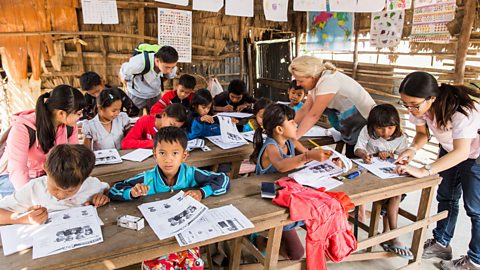Push and pull factors
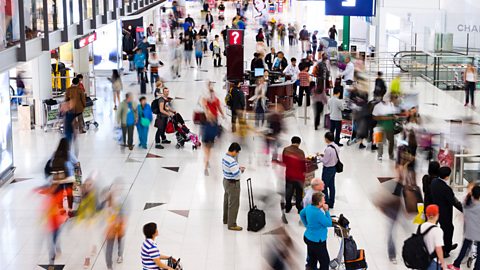
migrationMigration is the movement of people from one place to another. can take place over short or long distances and it can be a one-way movement or temporary.
Some people choose to migrate (voluntary) or others may be forced to move (forced).
emigrationThis is when people are leaving or exiting a country. is when people are leaving or exiting a country
immigrationThis is when people move into a country. is when people are moving into a country

Why do people migrate?
economic migrantThis is when a migrant chooses to move in order to improve their standard of living, wage or job prospects. - to find work or follow a particular career path.
A refugeeA refugee is a person who is fleeing from things such as civil war or a natural disaster but not necessarily facing persecution. is someone who has left their home and does not have a new home to go to. Often refugees do not carry many possessions and have no idea of where they may finally settle.
People migrate for many reasons. These could include; to be closer to family or friends, or to escape natural disasters such as flooding.
Some migration is for economic reasons. An economic migrant is a person who chooses to move from one place to another in search of a better standard of living by getting a job with higher pay or prospects.
Other people move because they have no choice. Refugees are forced to move from their home to another place or country due to persecution or fear, or due to the impacts of a natural disaster.
Push Factors are negative things that make people want to move to a new area e.g war or a family break-up.
Pull Factors are positive aspects that attract people to move to a place e.g good employment opportunities.
Migration usually happens as a result of a combination of these push and pull factors.
| Push factors | Pull factors |
|---|---|
| Lack of services | Better services |
| Low employment | Higher employment |
| Lack of safety | Safe society |
| High crime | Less crime |
| Crop failure | Fertile land |
| Drought | Lower risk of natural hazards |
| Flooding | Good climate |
| Poverty | More wealth |
| War | Political stability |
Barriers to migration
Migration movements are rarely smooth.
People who are migrating have to negotiate a number of barrierMigration barriers can discourage or prevent someone from migrating. when moving between countries.
A number of obstacles can get in the way such as legal restrictions, family attachments, and costs incurred etc.
Human barriers to migration
Documentation is required to allow migration. Within the European Union (EU) migrants only need a passport. However, to migrate into other countries long application processes for visas or work permits are necessary.
Each country will have a specific set of rules about how many visas they give out each year or the type of skills and qualifications that someone might need to have.
Physical barriers to migration
Economic migrants will often arrive by aeroplane, but refugees, asylum seekers and illegal immigrants might all try to find the easiest way to cross a border.
From 2015 to the present, a huge number of illegal migrants have journeyed across the Mediterranean Sea to get to Greece, Turkey, Italy or Spain.
Many of these people might already have made their way across deserts or mountain ranges to escape persecution, conflict or war.
These physical barriers can be difficult to cross and many people are intercepted and returned to their place of origin.
Economic migration
Economic migration is defined as a choice to move to improve the standard of living by gaining a better paid job.
It is economic pressures, concerns or opportunities that provide the main reason for a migration move. People want to improve their wages and will be prepared to move to facilitate this.
When Poland and seven other Eastern European countries joined the EU in 2004, the UK received many economic migrants.
The pull factorsPositive aspects that attract people to move to a place e.g good job opportunities. included wages five times greater than they could get at home. Some come for seasonal jobs, such as vegetable and fruit picking.
More qualified migrants may look for medical or education jobs. The Eastern European migrants are not evenly spread across the UK, as the map below shows.
This map of the UK show the total numbers of Eastern European migrants in each local authority who registered for work between May 2004 and December 2007.
As opportunities in Poland and other eastern European countries increase, people have started to move back.
Net migration over 10 years between mid 2010 and mid 2020
Net means it takes account of those who leave as well as those who arrive. The figures are numbers of people.
| NI Region | Migrant Population | NI Region | Migrant Population |
|---|---|---|---|
| Belfast | -2364 | Fermanagh & Omagh | 1508 |
| Derry City and Strabane | -2359 | Mid & East Antrim | 2323 |
| Causeway Coast and Glens | -1319 | Newry, Mourne & Down | 3539 |
| Antrim & Newtownabbey | -984 | Mid Ulster | 4941 |
| Lisburn & Castlereagh | -229 | Armagh City, Banbridge & Craigavon | 8577 |
| Ards & North | -59 |
The numbers of migrants into Northern Ireland between 2010 and 2020 were relatively low. Some of the migrants returned to their home countries after Brexit (when the UK voted in 2017 to leave the European Union) because of uncertainty over continuing to live in Northern Ireland. Others however decided to remain.
Where economic migrants live in Northern Ireland depends largely on those areas having suitable jobs. Often these jobs are in food processing and so more migrants are attracted to areas which have food processing plants.
Refugees
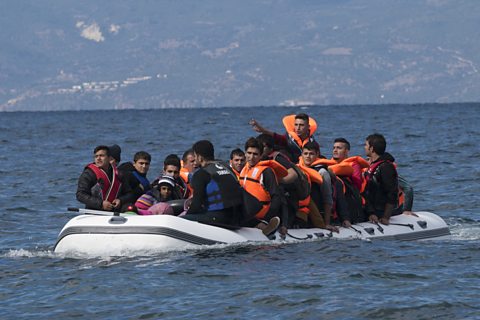
A refugee is a person who is fleeing from things such as civil war or a natural disaster but not necessarily facing persecution.
The United Nations defines a refugee as,
A person who cannot return to his or her own country because of a well-founded fear of persecution for reasons of race, religion, nationality, political association or social grouping.

Many refugees from the Darfur region of Sudan have migrated to the neighbouring country Chad, because of the civil war. Many have also stayed in Sudan, but live in refugee camps.
Refugees are living in cramped and unsanitary conditions, and many have lost family members in the conflict or from disease. Water is scarce and most people rely on aid agencies for food, shelter and medicine.
However, the aid efforts are being hampered by the Sudanese government and refugees are dying of disease, starvation and malnutrition. Chad is one of the poorest countries in the world, and the refugees from Sudan are putting a strain on already scarce resources.
Challenges faced by refugees
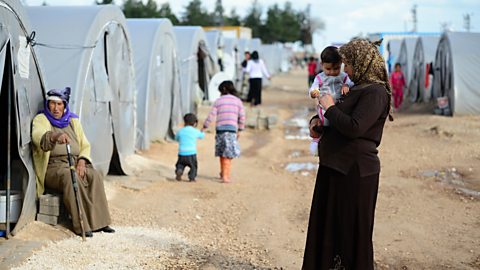
The Syrian crisis is an on-going armed conflict in Syria between forces loyal to the Ba’ath government and those opposing them. In 2016, it was estimated that over 470,000 had died as a result of the civil war.
An estimated 6 million people are Syrian refugees who have sought refuge and protection across Europe from 2011 to the present day.
The unrest in Syria started in 2011 and it only took 1 month before the first migrants started to arrive in Turkey. Nearly half of these (around 3 million people) have remained in Turkey.
About 30% of the registered refugees live in 22 government-run camps near the Syrian border. Turkey is the home to the highest number of Syrian refugees and has provided more than $8 billion of aid.
Other countries have promised to help Turkey with this but much of the aid promised has not arrived.
Why are the Syrians leaving Syria?
Rising death rate due to war and unrest.
Little direct aid getting into Syria.
Families are concerned about their children.
Why have so many Syrians gone to Turkey?
It’s one of the closest countries to Syria.
Less risk as the people have similar beliefs (and a similar branch of Islam).
Turkey is a useful gateway to other European countries or even to places like Canada.
Turkish borders were open to receive the migrants.
Challenges faced by the refugees
Conditions in refugee camps are poor.
Conflict with the local people.
Many refugees live in fear of being sent home as their documentation or status is questioned.
No obvious end to the conflict in Syria. Refugees don’t want to return to a civil war.
Difficult for refugees to find employment.
As estimated 400,000 Syrian refugees are living in Istanbul – this puts pressure on the local refugee communities to ensure that there is enough food and work to sustain the people.
Challenges faced by the destination countryThis is the country that a migrant might be trying to get to in order to improve their economic prospects or personal safety.
As over 3 million Syrians have decided to remain in Turkey, this continues to put serious pressure on the government resources.
Small illegal businesses and smuggling rackets have been started by Syrians.
The number of children in the workplace has grown.
The amount of crime has increased in places where refugees are located.
There have been small but significant changes to local cultures, lifestyle and language.
Some poor urban areas are experiencing waves of over-crowding.
More on Population and migration
Find out more by working through a topic
- count1 of 3
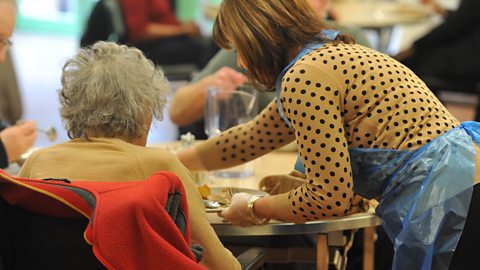
- count2 of 3
